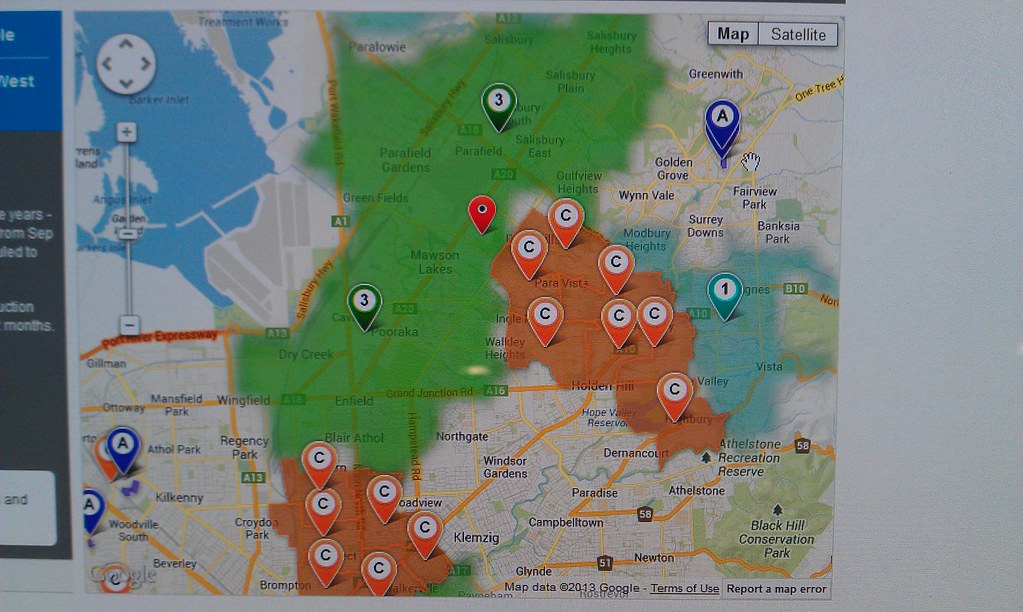Benefits of Selling Digital Products
If you’re looking for a way to earn money online, selling digital products is a great option. Digital products are intangible assets that can be sold online without the need for inventory. They have advantages such as low overhead costs and high profit margins, making them an attractive option for entrepreneurs. In this article, we’ll explore the benefits of selling digital products and provide tips on how to get started.
Low Overhead Costs
One of the biggest advantages of selling digital products is the low overhead costs. Unlike physical products, you don’t need to worry about manufacturing, shipping, or storage costs. This means that you can earn a higher profit margin on each sale. Additionally, you can create and sell digital products from anywhere in the world, making it a flexible and convenient way to earn money.
High Profit Margins
Because digital products don’t require physical materials or shipping costs, they have high profit margins. This means that you can earn a significant amount of money from each sale, especially if you’re able to sell your products at a premium price point.
Flexibility
Selling digital products also offers a high degree of flexibility. You can create and sell digital products in your spare time, and you can work from anywhere in the world. This makes it an ideal option for people who are looking for a side hustle or who want to work from home.
Ability to Create New Revenue Streams
Selling digital products can also help you create new revenue streams. Once you’ve created a digital product, you can sell it multiple times without any additional work. This means that you can earn passive income from your digital products while you focus on other projects.
Overall, selling digital products is a low-cost and low-hassle way to generate revenue. In the next section, we’ll discuss the types of digital products that you can sell online.

Types of Digital Products to Sell
Now that we’ve discussed the advantages of selling digital goods, let’s look at the various kinds of digital products you can sell online. Here are the six best digital goods to sell online, according to a post on Shopify’s blog:
-
Educational Products – Educational goods like online courses, eBooks, and digital workshops are in high demand. Education digital products provide a practical and affordable way to do so because people are constantly looking for ways to improve their knowledge or learn new skills.
-
Digital assets like images, music, and video are in high demand for use in online content because they areLicenses to use them. You can make a consistent income by selling licenses to use these assets without having to worry about producing new content.
-
Membership Sites – For a monthly or annual fee, membership websites give them exclusive access to content or services. You can earn recurring revenue from your customers by building a membership site.
-
Digital templates and Tools: Digital templates and tools, like website themes, email templates, and social media graphics, are in high demand. You can earn a lot of money by making and selling these templates.
-
Music or Art: If you’re a musician or artist, you can sell your music or artwork online. You can reach a larger audience by selling your work online because digital music and art are in high demand.
-
The sale of digital services like consulting, coaching, or design services is another option. You can reach more customers and make a higher hourly rate than you would with conventional in-person services by selling your services online.
You can earn a sizable sum of money online by selling one or more of these digital goods. The development and sale of digital goods will be covered in the next section.

How to Create and Sell Digital Products
Let’s talk about how to create and sell digital goods now that you are aware of the kinds you can sell online. Here is a step-by-step method for producing and selling digital goods online, according to an article on Oberlo’s blog.
The first step is to 1. Brainstorm, conduct research, and evaluate your suggestions
brainstorming ideas is the first step in creating digital products. Consider your abilities and knowledge as well as the issues your audience is dealing with. After that, do some research to make sure there is a market for your concepts. Last but not least, test your ideas out with your audience to validate them.
The second section is located below. Using an Ecommerce Platform, Create an Online Store
It’s time to launch an online store once you have your digital goods ready. You can use a variety of online shopping platforms, including Shopify, WooCommerce, and BigCommerce. With the help of these platforms, setting up an online store and selling your digital goods are simple.
-
3. Use a number of strategies to increase sales.
It’s time to begin promoting your digital goods once you’ve set up your online store. Content marketing, social media marketing, and email marketing are just a few strategies you can employ to boost sales. It’s crucial to pick the approaches that are most effective for your audience and your digital products.
The following is the 4. Provide Top-notch Customer Support
Last but not least, it’s critical to provide excellent customer support. Make sure to respond to their inquiries and concerns right away and give them the assistance they require. You can establish a devoted customer base and boost sales by providing top-notch customer support.
You can produce and sell digital goods online by adhering to these steps. Where to sell digital goods online will be covered in the next section.
Where to Sell Digital Products Online
Now that you know how to create digital products, let’s discuss where to sell them online. According to an article on Thinkific’s blog, here are some of the best places to sell digital products online:
1. Your Own Website
One of the best places to sell digital products is on your own website. By setting up an online store on your website, you can have complete control over your products, pricing, and branding. You can also integrate your online store with your email marketing and social media accounts to promote sales.
2. Marketplaces
Another option is to sell your digital products on marketplaces such as Amazon, Etsy, and eBay. These platforms already have a large audience, so it can be easier to reach potential customers. However, you’ll have to pay fees and may face more competition.
3. Digital Product Platforms
There are several digital product platforms, such as Gumroad, Sellfy, and FetchApp, that allow you to sell digital products directly to customers. These platforms make it easy to set up an online store, manage your products, and process payments.
4. Membership Sites
As mentioned earlier, you can also sell digital products through membership sites. By creating a membership site, you can offer exclusive access to your digital products for a monthly or annual fee. This can help you earn recurring revenue and build a loyal customer base.
5. Social Media
Finally, you can sell digital products directly through social media platforms such as Facebook and Instagram. These platforms allow you to set up a shop and sell your products directly to your followers.
By selling your digital products on one or more of these platforms, you can reach a wider audience and increase your sales. In the next section, we’ll discuss how to promote your digital products.

The best way to advertise your digital goods
It’s time to advertise your digital goods now that you’ve created and listed them. Here are some efficient ways to advertise your digital products, according to a post on Sellfy’s blog:
The first step is to 1. Content marketing: How to Do It
A fantastic way to advertise your digital goods is through content marketing. You can draw visitors to your website by producing worthwhile content like blog posts, videos, or podcasts. To encourage visitors to check out your digital products, make sure to optimize your content for search engines and include calls to action.
The second section is located below. Social media marketing: How to do it
Another effective tool for advertising your digital goods is social media. You can reach a larger audience and boost sales by sharing your goods on social media sites like Facebook, Twitter, and Instagram. Use captivating visuals and include calls to action in your posts.
-
3. Email Marketing
Promoting your digital products to your subscribers through email marketing is very efficient. You can keep your subscribers informed of your most recent products and exclusive offers by sending out regular newsletters or promotional emails. To increase engagement, be sure to personalize and segment your email list.
The following is the 4. Paid advertising
Another efficient way to advertise your digital goods is through paid advertising. To target your ideal customers and increase website traffic, you can use platforms like Google Ads or Facebook Ads. Make sure to monitor your outcomes and modify your campaigns as necessary.
-
5. Affiliate marketing is an effective strategy.
Finally, you can advertise your digital goods using affiliate marketing. You can give other bloggers or influencers in your niche a commission for promoting your goods to their audience by working with them. This can assist you in expanding your audience and boosting sales.
You can increase your visibility and sales by utilizing these strategies to advertise your digital goods. We’ll talk about how to fight pirates and safeguard your digital goods in the next section.
How to Fight Piracy and Protect Your Digital Products
One of the biggest challenges of selling digital products online is the risk of piracy. According to an article on Shopify’s blog, here are some strategies for fighting piracy and protecting your digital products:
1. Use Watermarks or Logos
One way to protect your digital products is to use watermarks or logos. By adding your logo or website URL to your digital products, you can deter potential pirates from stealing them. You can also use software such as Digimarc to embed invisible watermarks in your files.
2. Use Digital Rights Management (DRM) Software
DRM software can also help protect your digital products from piracy. DRM software encrypts your digital products and prevents unauthorized copying or distribution. However, DRM can also make it difficult for legitimate customers to access and use your products.
3. Monitor Online Marketplaces and Social Media
Another strategy is to monitor online marketplaces and social media for pirated copies of your digital products. You can use tools such as Google Alerts, Mention, or Brand24 to track mentions of your products online. If you find pirated copies of your products, you can send takedown notices to the website or social media platform.
4. Offer Free Samples or Demos
Offering free samples or demos of your digital products can also help deter piracy. By giving potential customers a taste of your products, you can encourage them to buy the full version instead of pirating it.
5. Educate Your Customers
Finally, it’s important to educate your customers about the risks and consequences of piracy. Make sure to include copyright notices and warnings in your digital products, and explain why piracy harms your business and your ability to create more products.
By using these strategies to fight piracy and protect your digital products, you can safeguard your business and your intellectual property. In the next section, we’ll discuss some frequently asked questions about selling digital products online.

Frequently Asked Questions Regarding Online Sales of Digital Products
Online selling digital goods can be a challenging process, and you might have some questions about it. We’ll address some frequently asked questions about selling digital goods online in this section:
The first step is to 1. What kinds of digital goods can I sell online?
EBooks, online courses, graphic design work, music and audio, software and games, and printables are just a few of the many digital goods available online. The most popular digital goods include graphic design, templates, downloadable prints, music and audio, stock photography, and print on demand goods.
The second section is located below. How do I price my digital goods?
It can be difficult to price your digital goods. It’s crucial to take into account elements like your production costs, the value you’re offering to customers, and your rivals. Additionally, you can experiment with various pricing strategies, like offering discounts or bundling goods.
-
3. How do I get customers to buy my digital goods?
Email, download links, and online storage platforms are just a few of the options available to customers to deliver digital goods. Make sure to pick a delivery method that is secure and simple to use for your clients.
The following is the 4. How do I get paid for my digital goods?
You must set up a payment gateway like PayPal or Stripe in order to accept payments for your digital product. Make sure your customers can use a payment gateway that is dependable, trustworthy, and simple to use.
-
5. How can I shield my digital goods from pirates?
Using watermarks or logos, using DRM software, and keeping an eye on social media and online marketplaces are just a few ways to safeguard your digital products from pirates as was already discussed.
-
6. How can I advertise my digital goods?
You can use strategies like content marketing, social media marketing, email marketing, paid advertising, and affiliate marketing to advertise your digital goods.
You can better navigate the online sales process by comprehending the responses to these frequently asked questions. We’ll provide some last-minute advice on how to successfully sell digital goods online in the section that follows.

Start Selling Your Digital Products Right Now
Online sales of digital goods can be a lucrative and rewarding business. You can create, advertise, and safeguard your digital products and establish a prosperous online business by using the strategies described in this article. Here are some pointers on how to start selling your digital goods right away:
The first step is to brainstorm and evaluate your concepts.
brainstorming and validating your ideas are the first steps in selling digital goods online. Use tools like Google Trends or Keyword Planner to find well-liked topics and keywords, and make sure to research your target market and competition.
The second section is located below. Create and list Your Digital Products
It’s time to create and list your digital products once you’ve given your concepts some thought. Make sure to optimize your product listings for search engines while using high-quality images and descriptions.
-
3. Promote Your Digital Products.
Use strategies like content marketing, social media marketing, email marketing, paid advertising, and affiliate marketing to promote your digital products to increase sales and visibility.
The following is the 4. Keep Your Digital Products Safe.
Using methods like watermarks or logos, DRM software, and keeping an eye on online marketplaces and social media, it’s crucial to safeguard your company and your intellectual property frompiracy.
-
5. Keep Learning and Improving.
Finally, it’s critical to keep learning and enhancing your digital product business. Keep up with market trends and best practices, and pay attention to customer suggestions to enhance your goods and services.
We sincerely hope that this article has given you insightful information on how to sell digital goods online. For more advice on digital marketing and e-commerce, look through our other excellent content. Start selling your digital goods right away to advance your company!
Q & A
Who can sell digital products online?
Anyone can sell digital products online, from individuals to businesses.
What types of digital products can I sell online?
You can sell a wide variety of digital products online, including ebooks, online courses, graphic design work, music and audio, software and games, and printables.
How do I protect my digital products from piracy?
You can protect your digital products from piracy by using watermarks or logos, using DRM software, and monitoring online marketplaces and social media.
How do I price my digital products?
Pricing your digital products can be a challenge, but you can consider factors such as production costs, value, and competition. You can also experiment with pricing strategies.
What’s the best way to deliver digital products to customers?
You can deliver digital products to customers via email, download links, or online storage platforms. Choose a secure and easy-to-use delivery method.
How do I accept payments for my digital products?
To accept payments for your digital products, you’ll need to set up a payment gateway such as PayPal or Stripe. Choose a secure, reliable, and easy-to-use payment gateway.
